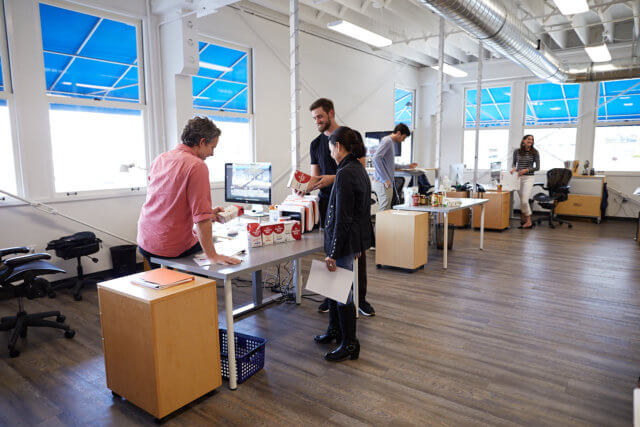
In the old world, packaging was designed as a one sided conversation with brands screaming for attention at the shelf. In the 21st Century, the design challenge shifts from packaging designed to stand out on the shelf to something that’s truly useful and memorable.
And in a world where the store shelf is increasingly a digital one, brands are rethinking their approach to package design and the role it plays in the customer journey.
Take the cereal category, for example. On the retail shelf, those tall cereal boxes with lots of vibrant branding don’t really matter as long as the box optimizes the shelf space and provides a stackable form factor. In e-commerce, that same air is your enemy. It costs you and your retail partner’s additional money to ship and adds no real value. E-commerce changes all of that. Not only can you design for greater shipping functionality and efficiency, but you can optimize for the human touch — more effective open/close functionality or handles for easier pouring, visual indicators (e.g. windows) to aid in replenishment, or both horizontal and vertical graphics to help consumers better identify what’s what in their own kitchen cabinets.
In the 21st Century, digital technology enables marketers to better sync their brands with consumer usage patterns. Look at Dollar Shave Club and how that brand has made it easy and fun to ‘subscribe’ to a good quality shaving experience. How did they do it? Not with proprietary technology, or economies of scale or a massive ad campaign. They’ve succeeded in creating a holistic human-centered experience encompassing product, packaging, distribution, brand, and communications. Every element in the mix demonstrates an understanding of their audience and their frustrations with the big conglomerates who’ve set the rules of shaving for so many years.
In the 21st Century, brands have an opportunity to create more personalized human experiences.
Last Christmas, Oreo’s created a website shop.oreo.com where consumers can design custom packages of cookies. With Oreo Color-filled, customers can choose from two designs, one each from graphic artists Jeremyville and Timothy Goodman. Each feature cartoonish seasonal images, including Santa, snowmen, and ornaments. Users can adjust the size of the images and choose from four colors to further personalize the design.
Heinz in the U.K. ran a promotion for its Facebook followers that allowed them to order a can of soup for a friend with a personalized label reading, “Get Well Soon,” and the friend’s name. It created a media frenzy,” says Darko Martinovic, Vice President Design Operations. “It was not just about the packaging that came with the soup. It also sent a message, connecting emotionally. That’s what we’re talking about: connecting emotionally.”
In the old world, the primary role of packaging was to attract consumers’ attention, to protect the product, provide information about ingredients and nutrition, and give some expectation of the product experience (imagery, color, texture). In the 21st Century, your package is the gateway to your brand story – and a vital element that drives trust, loyalty, and retention.
We see it as a simple formula:
Deep Brand Story + Fresh Brand Design = Restoring The Human Touch for 21st Century Success
If you’d like to explore how these trends might be affecting your brand, contact us. We’d love to help you get your brand on a winning path.